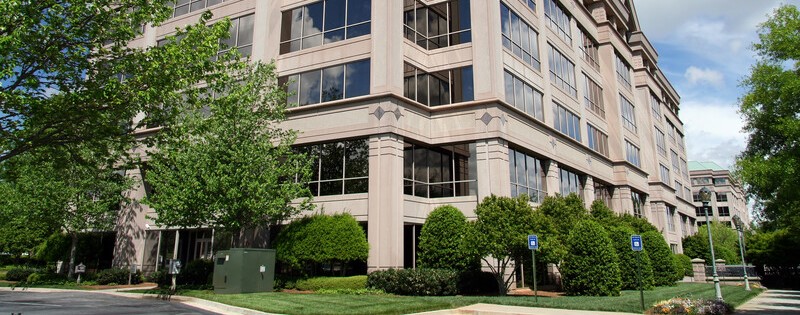South Florida’s office market has long revolved around its urban cores, but rising construction costs and increasing downtown rents are shifting investor interest toward the suburbs. With more affordable land, easier access, and a decentralized workforce, suburban offices are increasingly seen as valuable assets—especially when paired with upgrades or redevelopment potential.
A Market in Transition
While some suburban office properties are thriving with strategic investments, others are better suited for conversion into multifamily housing, industrial space, or medical facilities. According to Matt McCormack of JLL, the issue isn’t that office space is failing—it’s that alternative uses are outperforming traditional office functions in South Florida’s red-hot market.
Vacancy Pressures and Redevelopment Trends
Colliers’ Q1 data highlights high vacancy rates in suburban areas like Hallandale Beach, Sawgrass Park/Sunrise, and Boca Raton North, signaling redevelopment opportunities. Even in lower-vacancy areas like Doral and Boynton Beach, aging or underperforming office buildings are being razed to make way for apartments, warehouses, or healthcare facilities.
“The commodity office market—those lacking amenities or modern design—is essentially dead,” says Kevin Gonzalez of Colliers.
He notes that demolishing outdated buildings often benefits surrounding upgraded offices by driving demand and raising occupancy in higher-quality spaces.
Amenities Are Key
Office space that thrives today is amenity-rich and experience-driven. Modern tenants expect walkable restaurants, collaborative common areas, fitness centers, and dynamic design. Rent levels also influence redevelopment decisions. In lower-rent areas, the cost to renovate may not justify the return—leading owners to opt for demolition or repurposing.
Areas like Coral Gables are experiencing strong demand because they provide easier commutes, quality infrastructure, and vibrant communities. Nearly half of Coral Gables’ new office leases since 2021 came from companies relocating from Downtown or Brickell.
Suburbs as Viable Office Hubs
Tere Blanca of Blanca Commercial Real Estate says many tenants are seeking quality suburban offices that offer a better cost-to-value ratio. Submarkets like Aventura, North Miami Beach, and Bay Harbor Islands are gaining traction, especially among residents who want to avoid long commutes.
But to succeed, suburban offices must be inviting. Blanca notes that features like cafes, fitness amenities, and event spaces are crucial to luring companies and talent back to the office.
Reimagining Suburban Office Space
There’s still value in many suburban offices—particularly those well-located and updated. Darcie Lunsford of Colliers notes that areas such as Boca Raton, Coral Springs, and Cypress Creek are seeing renewed interest, fueled by residential growth and highway access. She adds that today’s tenants want smaller, high-end spaces with sleek lobbies and a location close to restaurants and shops—not isolated business parks.
“People living in places like Parkland don’t want to drive into downtown Miami,” Lunsford says. “The question many CEOs ask is: can we be closer to where our people live and still operate effectively?”
Medical and Mixed-Use Development Gains Momentum
One segment that’s thriving in suburban markets is medical office space. According to Bert Checa of Lee & Associates, medical offices remain in high demand, largely unaffected by remote work trends. Many older Class B offices in areas like South Miami and Kendall are being converted for healthcare use due to proximity to hospitals.
Adding multifamily to office properties is another strategy developers are embracing. Aventura-based BH Group CEO Isaac Toledano is actively converting parking lots and underused office spaces into apartments and retail hubs, while maintaining or renovating select office buildings. This mixed-use model is boosting office rents and attracting tenants seeking lifestyle-rich environments.
Industrial Emerges as a Powerful Alternative
Some suburban office buildings are being replaced by warehouses, especially as industrial rents hit record highs. Large properties like the former Ryder headquarters in Miami-Dade and Baptist Health’s Boynton Beach facility have been redeveloped for industrial use. David Blount of Foundry Commercial notes that industrial development now outpaces office in many cases, especially where zoning and site size align.
A Silver Lining for Office Space
Ironically, the shrinking supply of office inventory may help stabilize and even boost values for the buildings that remain. JLL reports that over 4.3 million square feet of Miami-Dade office space is expected to come offline soon, with additional reductions in Broward and Palm Beach counties.
That tightening of supply, paired with steady leasing demand, could drive rents upward and breathe new life into South Florida’s office sector.
The Outlook: Office Isn’t Dead—It’s Evolving
While suburban office markets face challenges, they also offer opportunities for reinvention. Developers and investors who adapt—by adding amenities, integrating multifamily or healthcare components, or converting to industrial—stand to gain the most.
As JLL’s McCormack puts it, “Not all office is bad office. In fact, office is poised for the greatest comeback of any sector this decade.”
Source: SFBJ


